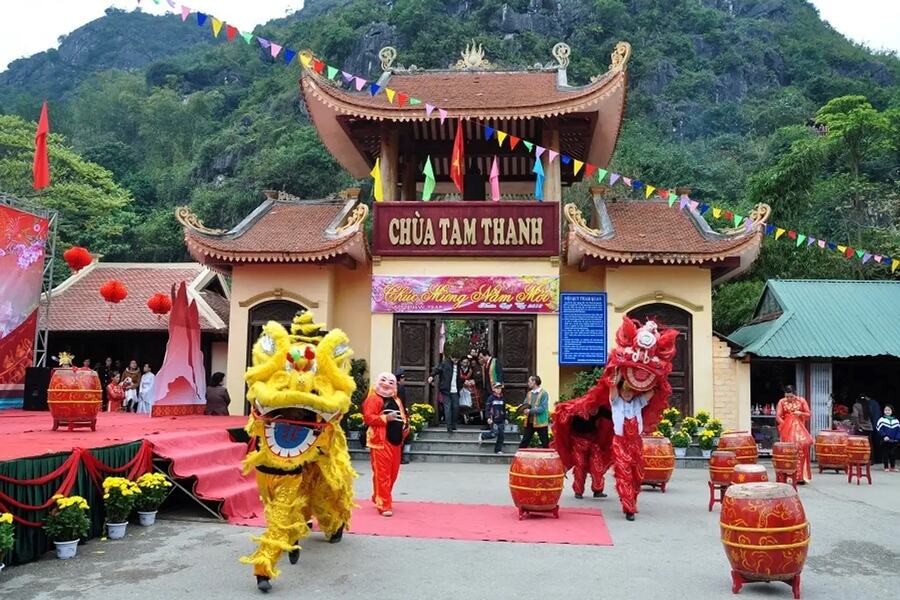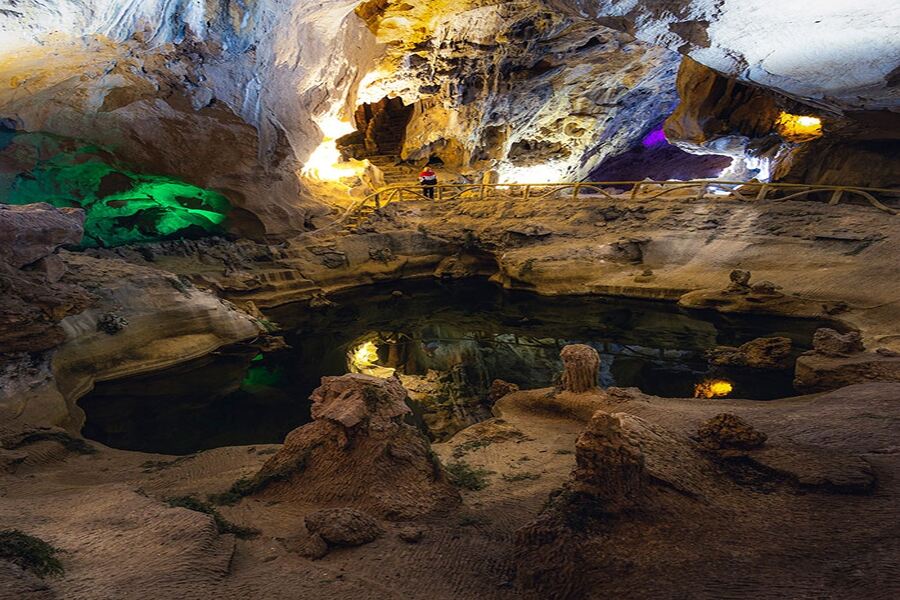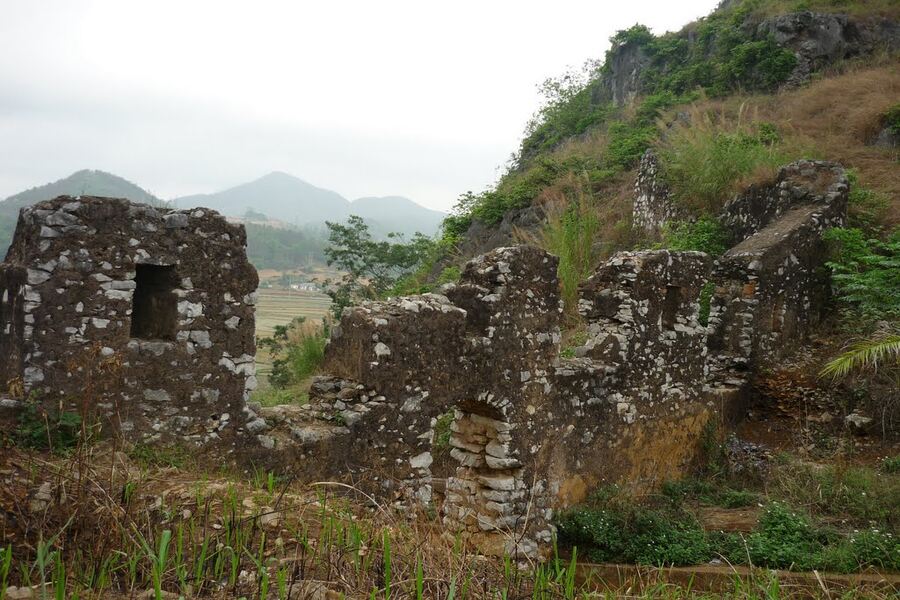Tam Thanh Pagoda

Tam Thanh Pagoda is uniquely located in a stone cave in Tam Thanh Grotto. Built under the Le Dynasty around the 15th - 16th century. It was originally a place of worship for Taoism. Later, Buddhist statues were added due to the influence of Buddhism.

The entrance gate of Tam Thanh Pagoda
Ancient folk verses have described Tam Thanh Pagoda as a picturesque location in Lang Son Province. To this day, the temple continues to attract visitors with ancient, taciturn beauty, harmonizing with nature. Let Asia King Travel show the offbeat features of Tam Thanh Pagoda in this article.
Tam Thanh Pagoda is part of a scenic complex in Lang Son City, Lang Son Province. It is located about 160 kilometers northeast of Hanoi. Although it's a bit of a journey, traveling to Lang Son from Hanoi by road brings the best experience.
While you can take a coach to the city, exploring the route with your vehicle is highly recommended as the stunning scenery along the way. Travelers from afar should first arrive at Noi Bai International Airport (Hanoi) to begin the journey to Lang Son.
From the third ring road, take Thanh Tri Bridge to National Highway 1A. Then, follow Highway 1A towards Hanoi - Lang Son and you will arrive in Lang Son City. From Lang Son city center, straight forward Hung Vuong Street and turn onto Tam Thanh Street to reach your destination. You might encounter many other historical sites as you pass through the city.
Suggested for you: North East Trail 11 Days
Because of high-altitude location, the weather at the pagoda is always cool and pleasant throughout the year. You can visit anytime and enjoy the fresh, comfortable atmosphere.

Lion dance at Tam Thanh Pagoda Lunar New Year festival
Notably, on the 15th day of the first lunar month, the temple hosts an annual festival attracting visitors to attend and pray. Or, arrive even earlier in winter to witness Mau Son Mountain's snow-capped peak. Be sure to bring warm clothes if you travel during this time. Don’t mess with the cold of northern Vietnam.
You need to ascend 30 stone steps to reach the grotto's entrance. Passing through the Tam Quan gate, you'll discover a spiritual, enchanting space. Buddhist altars are scattered throughout, blending with the stalactites in the cave.

The stairs leading up to Tam Thanh Grotto
In front of the cave entrance remains a poem by Scholar Ngo Thi Sy, praising Lang Son's natural beauty. Passing through the cave's opening, visitors will immediately encounter Buddhist altars and several ancient inscriptions.
Go deeper into the cave lies a subterranean lake named "Am Ty" (the underworld). The lake's cool water flows day and night. The cave ceiling is adorned with stalactites of various shapes, each given a whimsical name by the locals: Old Sage, Lion, Parasol Tree, Elephant, “Stairway to Heaven”, etc.

The water in Am Ty Lake never dries up
Beyond Am Ty Lake, a relatively flat courtyard illuminated by two natural skylights. From the center of the courtyard, a path leads up to the Vong Thi Pavilion. Here, visitors can see Lady To Thi stone statue, eternally waiting for her husband's return.
Tam Thanh Pagoda is a one-of-a-kind temple, built inside a natural cave. The relics inside are carved directly into the walls. The arrangement of the statues reflects a traditional worship system “Buddha at the forefront and deities behind.”

Buddha statue was carved into the cave wall
A special Amitabha Buddha statue is enshrined at Tam Thanh Pagoda. The statue standing 202 centimeters tall, is depicted wearing a flowing robe. The hands are pointed downwards in the "Amrita Mudra" (the nectar gesture). The figure is carved in relief on the cave wall, framed by a bodhi leaf shape.
Today, Tam Thanh Pagoda still preserves a rich collection of stone inscriptions. The oldest dates back to 1677 and records the temple's restoration. Additionally, the pagoda houses the only Nom script inscription found in Lang Son Province written in 1924.
At the summit of To Thi Mountain stands a natural rock formation, resembling a woman holding a baby and gazing into the distance. In Vietnamese folklore, this is Lady To Thi, waiting for her husband back from war in the north. Every day, she would carry her baby up the mountain and look out for his return. After years of waiting, she turned into stone.

The rocks are shaped like a mother holding her child
Discovered by Ngo Thi Sy, Nhi Thanh Grotto stretches approximately 500 meters. The spacious cave features a network of passages with Ngoc Tuyen Stream flowing through the center. The space expands as you move deeper into the cave, providing ample room to view the stalactite formations.
Nhi Thanh Grotto still preserves numerous stone inscriptions carved on the walls. Inscriptions mainly praise the scenery, the people, and the cave discovery by ancestors. Locals also carved Ngo Thi Sy's portrait to commemorate his contributions as Governor of Lang Son.
Mac Citadel is a historical relic of the Mac Dynasty, built between the 16th and 17th centuries. The citadel was constructed in a strategic location, backed by three mountains and surrounded by a flat, open area. It bears the distinct mark of feudal military architecture.

Remaining walls of the ruin
With rugged terrain and fortified walls, the citadel has been a formidable defensive structure, utilized in numerous wars. Today, Mac Citadel has been restored and has become an attractive tourist destination.
Tam Thanh Pagoda hiding in Tam Thanh Grotto but still radiates majesty. If you are a spiritual traveler, Tam Thanh Pagoda is a destination not to be missed. Contact us now to plan a trip to the cultural symbol of Lang Son Province.
Suggested for you: Lang Son Tour 2 days: Bac Son Discover